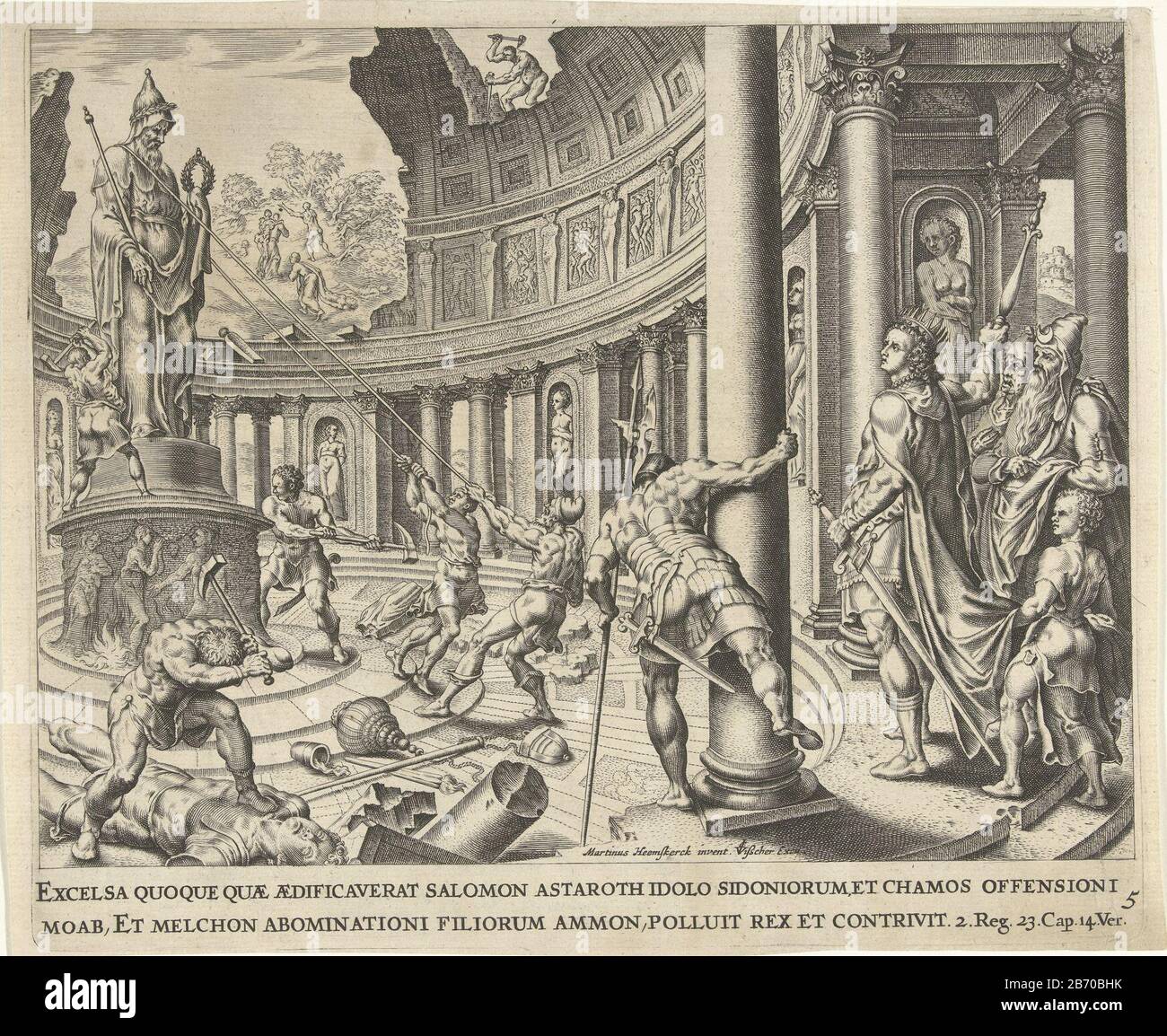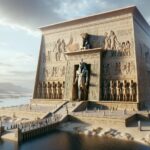Who Was Milcom?
Imagine a deity so powerful that he wasn’t just worshipped—he was considered the ultimate ruler, the “king” of all gods. That was Milcom to the Ammonites, an ancient people who inhabited present-day Jordan. Milcom wasn’t simply a distant deity; he was profoundly intertwined with their national identity, shaping their aspirations and very existence.
However, this “king” god wasn’t known for benevolence. While deeply revered, Milcom also inspired fear. This fear stemmed from the practices associated with his worship, particularly the unsettling ritual of child sacrifice. This practice, horrifying to neighboring cultures, underscored the vast gulf between the Ammonites and their contemporaries.
Milcom’s influence extended even to the Israelites. King Solomon, renowned for his wisdom, built a shrine dedicated to Milcom on the Mount of Olives, just outside Jerusalem. This decision, potentially driven by political strategy or an attempt to integrate different faiths, remains a controversial episode in Solomon’s reign.
Archaeological excavations have unearthed physical evidence of Milcom’s presence. Ancient inscriptions, whispers from the past, and faded images provide glimpses into the Ammonites’ relationship with their deity. Sites like Tophet, believed to be a location of child sacrifice, offer a chilling glimpse into the harsh realities of this ancient practice.
Unraveling the enigma of Milcom is akin to piecing together a complex puzzle. He stands as a stark reminder of the diverse and often unsettling nature of ancient religions. His role as the all-powerful god of the Ammonites, the disturbing rituals associated with his worship, and his influence on the entire region offer a captivating glimpse into a fascinating, if unsettling, chapter of human history.
The Significance of Milcom in the Bible
The Old Testament offers a glimpse into the religious landscape of the ancient Near East, introducing us to Milcom, the national deity of the Ammonites. He was more than just a god to them; he was their national symbol, representing their identity and power.
The Old Testament strongly condemns Milcom worship, labeling it an “abomination.” This condemnation stems from the Ammonites’ alleged practice of child sacrifice, a ritual abhorrent to Israelite beliefs. Tophet, a site near Jerusalem, is believed by some archaeologists to be a location where such sacrifices may have occurred.
Even King Solomon, known for his wisdom, succumbed to the allure of Milcom. His decision to construct a temple for this deity angered God, ultimately leading to the division of his kingdom. This event serves as a cautionary tale about the dangers of straying from one’s faith and embracing foreign deities.
Archaeological discoveries appear to support the biblical account of Milcom. Ammonite inscriptions mentioning Milcom by name and artifacts like pottery shards and figurines offer insights into their religious practices.
The concept of child sacrifice is undeniably horrifying. It highlights the stark contrast between the Israelites and the Ammonites in terms of religion and morality. The Bible is unequivocal in its condemnation of taking an innocent life, a practice diametrically opposed to God’s will.
In essence, Milcom represents a dark and disturbing aspect of ancient religion. While our understanding of him remains incomplete, his story serves as a stark reminder of the perils of abandoning one’s faith and the importance of adhering to moral principles.
Deciphering the Meaning of Milcom
Milcom, the national god of the Ammonites, held a position of paramount importance in their society. His very name, meaning “king,” underscores his status as their supreme deity and ruler.
Reconstructing a comprehensive understanding of Milcom proves challenging due to the limited written records left by the Ammonites. Our knowledge relies on piecing together fragmented clues from archaeological discoveries and biblical accounts.
Archaeological excavations in Jordan have unearthed temples, inscriptions, and artifacts that allude to Milcom’s existence and significance. The Bible, while critical of Milcom, provides additional insights into his worship and its implications.
One of the most disturbing aspects associated with Milcom is the suggestion of child sacrifice. While the Bible vehemently condemns this practice, archaeological evidence remains open to interpretation. Sites like Tophet offer tantalizing clues, but the specifics of what transpired there remain shrouded in mystery.
Archaeological discoveries continue to reshape our understanding of Milcom. The unearthing of temples dedicated to him, along with inscriptions mentioning his name, offers valuable insights into this enigmatic deity and his followers. Ongoing research promises to unveil further secrets, transforming the study of Milcom into an enthralling historical investigation.
Were Molech and Baal the Same God?
The ancient Near East was a melting pot of cultures and religions, often leading to the merging of deities and practices. The relationship between Molech and Baal exemplifies this complexity, raising questions about whether they were distinct entities or different manifestations of the same divine force.
Molech, sometimes spelled Moloch, was a deity worshipped by the Ammonites and is often equated with Milcom. Archaeological evidence points to the possibility of child sacrifice being associated with his worship.
The Bible condemns Moloch worship in the strongest terms, associating it with child sacrifice and portraying it as an affront to God. The story of King Solomon’s construction of a high place for Milcom, resulting in divine retribution, underscores the severity of this transgression.
Archaeological excavations at Tophet, a site near Jerusalem, have revealed evidence of child sacrifice, potentially linked to Milcom worship. These findings offer a chilling reminder that the biblical accounts reflect real practices with tangible consequences.
The question of whether Molech and Baal were one and the same continues to spark debate. Some scholars maintain their separate identities, while others propose that they represent different aspects or regional variations of a single deity.
The ambiguity surrounding Molech and Baal’s relationship highlights the challenges of reconstructing ancient belief systems. Centuries of cultural exchange, evolving religious practices, and limited historical sources make it difficult to arrive at definitive answers.
Unmasking Milcom: Unveiling the Mysteries
This article aimed to provide an in-depth exploration of Milcom, the enigmatic deity of the Ammonites. By synthesizing archaeological findings, biblical accounts, and scholarly interpretations, we sought to shed light on his nature, worship, and enduring legacy.
While many questions about Milcom remain unanswered, his story serves as a stark reminder of the complexities of ancient religions and the profound influence they exerted on individuals and societies alike. The ongoing quest to unravel his mysteries promises to enrich our understanding of the ancient world and the enduring power of belief.
- SYBAU See You Baby Meaning: Gen Z Slang Evolves - July 1, 2025
- Unlock Your Inner Youth: Lifestyle Secrets for a Vibrant Life - July 1, 2025
- Decode SYBAU Meaning: Gen Z Slang Explained - July 1, 2025






